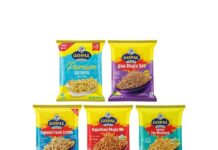
For the first time, the main mechanism of lactic acid bacteria with a bioprotective effect against yeasts and molds in dairy products has been revealed. It’s all about competition for a specific nutrient (manganese).
While the popularity of food cultures that can help improve quality and shelf life has increased non-stop over the past years, Chr Hansen scientists are the first to reveal the mechanism that can explain the main part of the inhibitory effect against yeast and mold spoilage organisms. The findings on the mode of action are documented in a new scientific article featured in the Applied and Environmental Microbiology Journal.
With the increasing use of natural lactic acid bacteria, or good bacteria, such as Chr Hansen’s FreshQ food cultures, there has been increasing interest in understanding the underlying mechanisms used by certain lactic acid bacteria to delay the growth of spoilage organisms. So far, most scientific activities have focused on trying to identify antimicrobial compounds produced by the food cultures, but without being able to identify any compounds that could explain a considerable part of the effect. Therefore, it became apparent that other mechanisms play a major role, but the specific mechanism had not been proven until now.
Competition for a specific nutrient
“What we have discovered and proved is the ability of our good bacteria in the FreshQ® cultures to absorb a nutrient in fermented milk that yeast and mold need to grow. This nutrient is called manganese. Through a ‘transporter’ in the bacterial strains the nutrient is removed from the food matrix, preventing the unwanted contaminants to feed on it,” says Rute Neves, director in Bacterial Physiology, Research & Development, Chr Hansen and affiliated professor at DTU (Technical University of Denmark), Bioengineering.
Starting in-house, the Chr Hansen scientists identified in the strains the transporter that absorbs manganese in a specific dairy food matrix. In cooperation with North Carolina State University in the US, the mechanism was proven at genetic level.
Manifesting leading role in the bio-protection segment
According to Peter Thoeysen, director in Dairy Bioprotection, Chr Hansen, this discovery is an important and game-changing chapter in Chr Hansen’s bioprotection history. The study also confirms that FreshQ food cultures help protect dairy products from spoilage caused by yeasts and molds in a natural way.
“We are truly using nature’s resources to help our customers build their brands, improve quality and reduce food waste while keeping up with market trends for real food with less artificial ingredients. Being able to describe exactly how they do this on a scientific level is helping us in the quest to support our customers with even better solutions for even more food types in the future. This manifests our leading role in the bioprotection segment, using the power of good bacteria,” concludes Thoeysen.
What is FreshQ?
FreshQ food cultures are lactic acid bacteria strains from Chr Hansen that have been specifically selected for their ability to help protect dairy products against spoilage caused by yeasts and molds. They offer a natural solution based on traditional principles of fermentation. They can help make dairy products like yogurt, sour cream and cheeses stay fresh for longer, helping dairies around the world to reduce food waste and improve quality while catering to the consumer demand for food with less artificial ingredients.
IndiFoodBev — authentic, impactful and influential
An English-language food and beverage processing and packaging industry B2B platform in print and web, IndiFoodBev is in its third year of publication. It is said that the Indian food and beverage industries represent approximately US$ 900 billion in revenues which implies more than 20% of the country’s GDP. Eliminating the wastage on the farmside can help to deliver more protein to a higher number of the population apart from generating sizable exports. The savings in soil, seeds, water, fertilizer, energy and ultimately food and nutrition could be the most immense contribution that country is poised to make to the moderation of climate change.
To improve your marketing and grow sales to the food and beverage processing and packaging industry, talk to us. Our research and consulting company IppStar [www.ippstar.org] can assess your potential and addressable markets in light of the competition. We can discuss marketing, communication, and sales strategies for market entry and growth.
Suppliers and service providers with a strategy and budget for targeted marketing can discuss using our hybrid print, web, video, and social media channels to create brand recognition linked to market relevance. Our technical writers are ready to meet you and your customers for content.
The second largest producer of fruit and vegetables in the world is continuously expanding processing capacities and delivery systems with appropriate innovative technologies. We cover product and consumer trends, nutrition, processing, research, equipment and packaging from farm to thali. Get our 2025 media kit and recalibrate your role in this dynamic market. Enhance your visibility and relevance to existing markets and turn potential customers into conversations. Ask for a sample copy of our bi-monthly in print or our weekly IndiFoodBev eZine each Wednesday.
For editorial info@ippgroup.in — for advertisement ads1@ippgroup.in and for subscriptions subscription@ippgroup.in
Naresh Khanna – 10 February 2025
Subscribe Now










